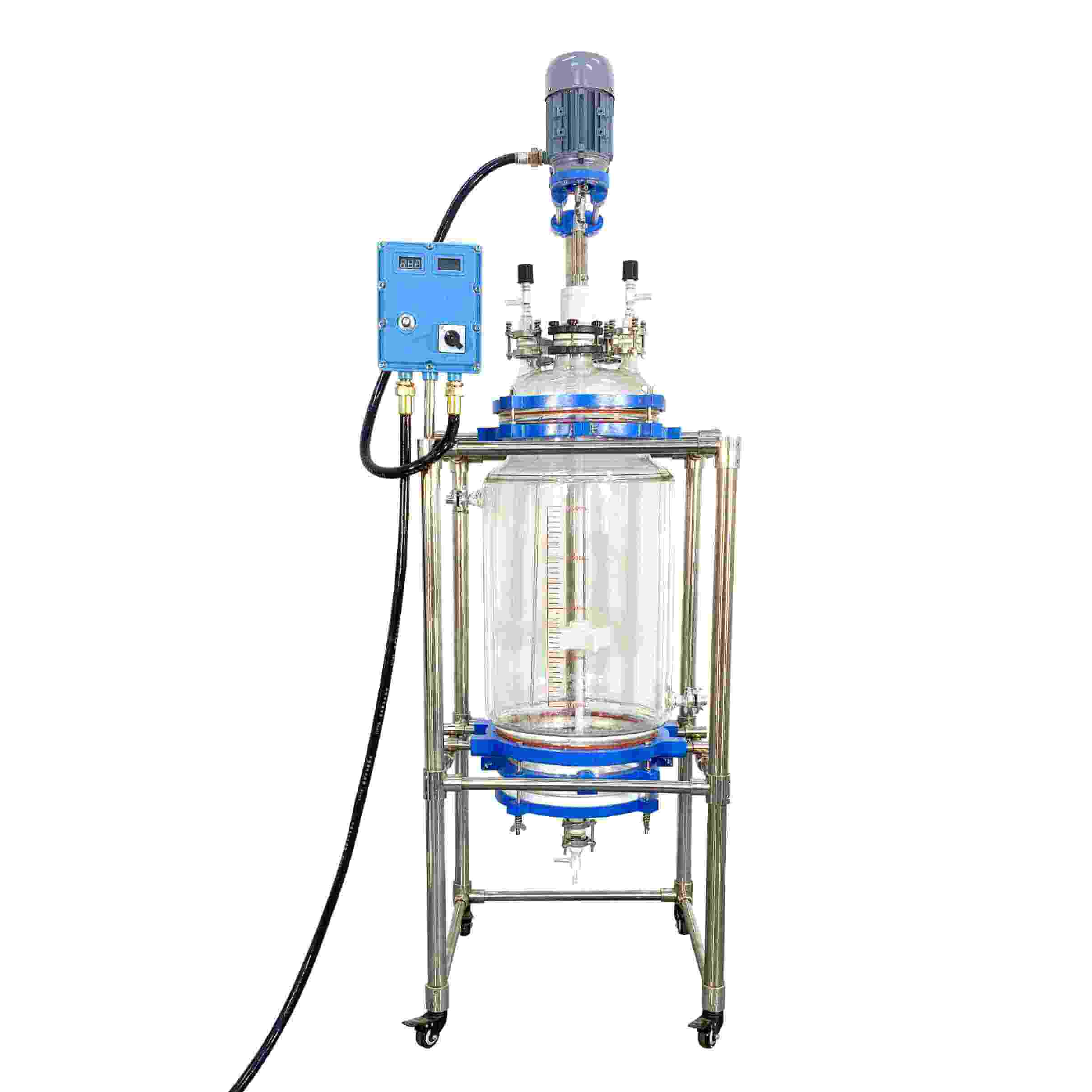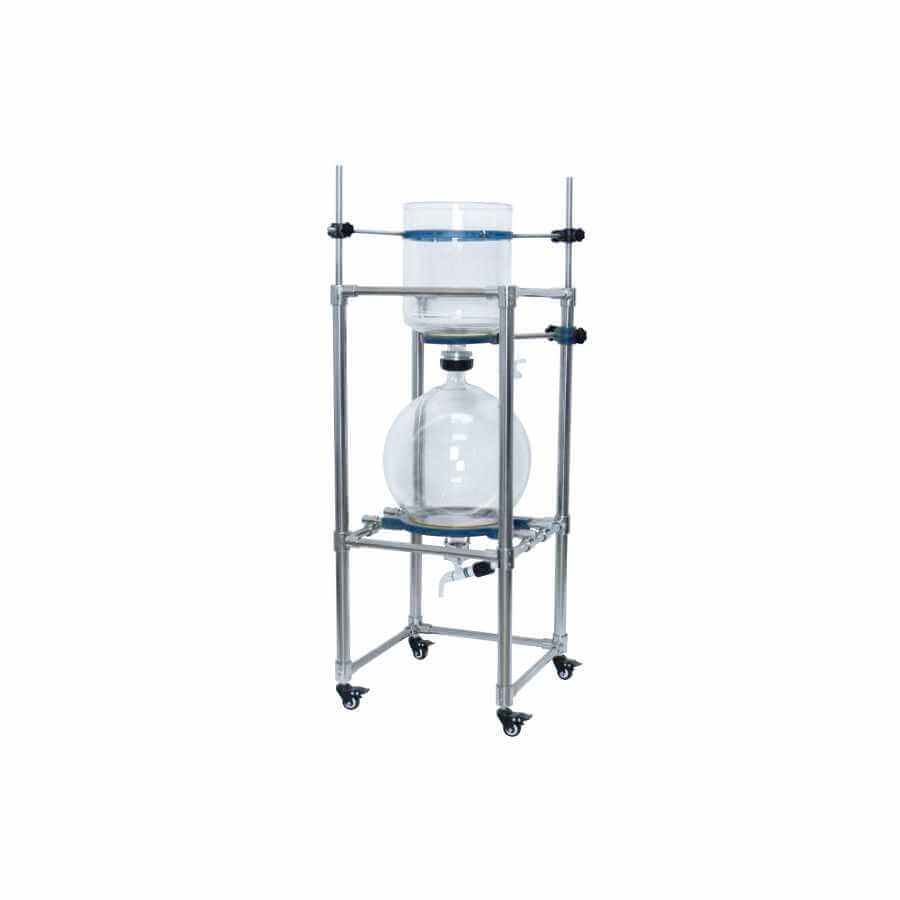

Glass Reactor
Glass reactors: used in chemical reactions, drug research and development, fine chemicals, food manufacturing, and other fields.
Material
glass
Capacity (L)
10-10000+
Mixing system
anchor, paddle, frame and others
Heating system
electric heating, oil heating and others
RUNGYU glass reactors are commonly used biochemical instruments and are widely used in modern fine chemicals, biopharmaceuticals, scientific research and experiments, and other industries. They can be used for concentration, distillation, reflux, separation, and purification reactions under the conditions of constant speed, constant force, and constant temperature. It is an ideal equipment for teaching, experiment, pilot test, and production.
Request a quoteGlass reactors are common equipment in chemical experiments. Some failures will inevitably occur during use, the most common being agitator failure and temperature control system failure. For example, the stirrer is unstable, immobile, noisy, the temperature control system has a large temperature difference the joint part leaks, the glass reactor pressure is abnormal, etc. Only by understanding the causes of these common failures can such problems be identified and solved in time to ensure that the experiment can be carried out smoothly.

Common stirring faults in glass reactors
1. The agitator does not rotate
It is very common for the agitator to not turn when the glass reactor is working, and there are many reasons for this. First screen the circuit problem, whether the power supply is not plugged in and stable, or the motor does not work. Then check whether it is the stirring process, the friction between the agitator and the reactants is too large, and the bearing of the agitator is damaged, resulting in the agitator being blocked or blocked. Each of these issues is identified and addressed. If there is no problem with the above, and the agitator still does not turn, you need to contact professional personnel for maintenance or directly find the seller to solve it.
2. Unstable stirring speed
There are several reasons for the unstable stirring speed of glass reactors. Generally, because the connection between the agitator and the motor is unstable, the connection between the two is loose, the speed regulator of the motor has failed, the bearing of the agitator is worn, and there are problems such as obstruction and blockage, and this series of problems and the agitator can not turn also have a certain relationship. In addition, there is a change in the viscosity of the reactants, which can also lead to unstable stirring speeds. Investigate and solve these problems, if the stirring is still unstable, there may also be aging of the product, it is recommended to contact the seller’s factory and contact professionals to solve them.
3. The stirrer is too noisy
If there is a noise problem in the agitator, you can first check whether the blades of the agitator are balanced, whether the bearings are operating normally, and if so, whether they need to be repaired and replaced. There is also whether the liquid water level in the agitator is normal, and reducing friction can also reduce noise. The speed of operation is also a factor that makes the agitator noisy, and high-speed rotation can also cause friction and noise. The stability of the bottom bracket of the glass reactor is also a key factor in reducing noise, and regular inspection and repair ensure the stability of the glass reactor.

Temperature and leakage failures common to glass reactors
1. Temperature instability
In this case, it may be a malfunction of the temperature sensor, an incorrect setting of the controller, a malfunction of the heater, etc.
2. The temperature deviation is too large
The outside temperature changes too much, the position of the sensor and the parameter setting are wrong, and other factors.
3. The heating speed is too slow
Possible reasons: insufficient heater power, unstable power supply voltage, poor contact between the heater and the glass reactor, etc.
4. Leakage phenomenon
Tightness is important, but aging seals will loosen the connectors, and the seals will also be damaged, which can lead to leakage.
5.Leakage location
The general leakage location will appear in the interface of the condenser, the inlet, and outlet of the material placement, the exhaust valve, etc. There will be problems with the seal.
The glass reactor is used at an abnormal pressure
1. Excessive pressure: excessive reactants, too fast reaction rate, poor cooling, etc.
2. Too low pressure: leakage, insufficient reactants, excessive cooling, etc.
3. Pressure fluctuations: uneven stirring, excessive temperature changes, cooling system failure, etc.
4. Glass reactor rupture: possible causes: improper operation, too fast temperature change, too high pressure, etc.
5. Power failure: Possible causes: poor contact of the power line, unstable power supply voltage, power switch failure, etc.
6. Controller failure: Possible causes include controller program error, controller sensor failure, controller display failure, etc.
When operating the glass reactor in chemical experiments, the operating procedures should be strictly followed, the equipment status should be checked regularly, and the equipment should be kept clean and well-maintained to reduce the occurrence of failures. At the same time, rational use of equipment, avoid overload operation, and ensure the safety of experimenters. Only by correctly handling and solving faults can the normal operation of the glass reactor be guaranteed and reliable support for chemical experiments.




